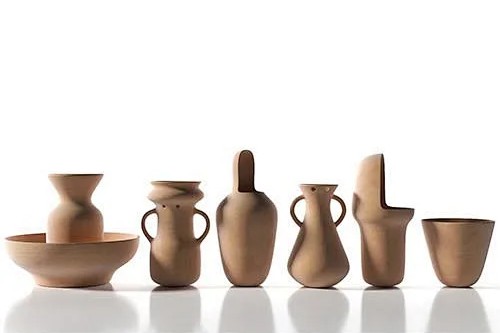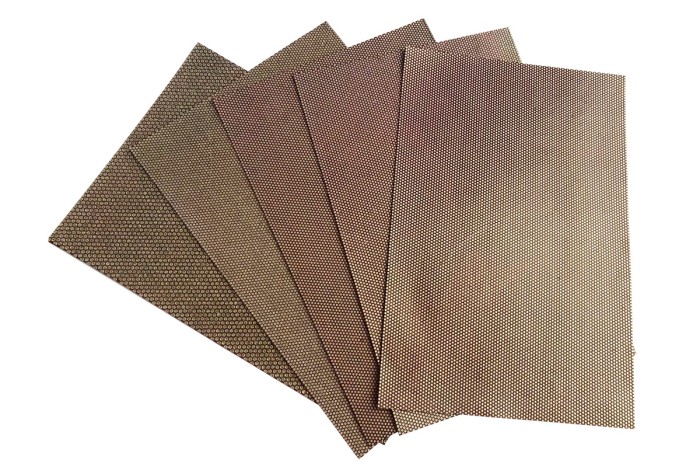Ceramic surfaces play a vital role in defining the beauty, functionality and durability of ceramic products. To achieve the required surface quality, various surface treatment methods are used, each tailored to address specific surface imperfections and improve the overall finish.
Mechanical Processing
Mechanical processing includes a series of techniques that use mechanical mechanics to resolve surface defects and improve the overall finish of ceramic products. The main methods of mechanical treatment include grinding, polishing, and sanding, each of which serves a different purpose in the surface preparation process.
1. Grinding: Precision surface refinement
Grinding uses grinding powder or abrasives to cut and refine the surface of ceramic workpieces, effectively eliminating surface defects and irregularities. This method is particularly effective for processing larger surface areas and rougher surface textures, enabling precise surface refinement and defect removal.
2. Polish: smooth and brighten
Polishing is a key step in the surface treatment process that aims to smooth and enhance the surface of ceramic products. This method uses polishing materials and special polishing machines to obtain a glossy and delicate surface finish, improving the overall beauty and visual appeal of ceramic products.
3. Sanding: Eliminate surface protrusions
Sanding refers to using sandpaper or polishing cloth to rub the surface of ceramic products to effectively eliminate surface protrusions and defects. This method is particularly suitable for resolving localized surface irregularities and achieving a uniform and smooth surface texture.
Chemical Treatment
Chemical treatment is a versatile and effective method of ceramic surface modification that utilizes physical and chemical principles to achieve desired surface properties. The approach covers a variety of techniques, including pickling, alkaline cleaning, coatings, and other chemical processes, each tailored to specific surface conditions and quality requirements.
1. Pickling: remove surface oxide scale and impurities
Pickling is to immerse ceramic products in an acidic solution to cause a chemical reaction between the solution and the surface to remove scale and impurities. This method is particularly effective at eliminating surface defects and improving the overall quality of the ceramic surface, making it suitable for products with significant surface oxidation or impurities.
2. Alkaline cleaning: removes surface oil and contaminants
Alkaline cleaning is immersing ceramic products in an alkaline solution and using chemical reactions to remove surface grease and other contaminants. By effectively cleaning the surface, this method helps achieve high surface quality, making it suitable for ceramic products that require thorough surface cleaning and preparation.
3. Coating: Forms a protective film to improve surface quality
Coating involves applying a protective film to the ceramic surface and is achieved through processes such as electroplating and chemical plating. This method is used to improve the surface quality and durability of ceramic materials, providing a protective layer that improves resistance to wear, corrosion, and environmental factors. Coatings are particularly beneficial for ceramic products that require high surface quality and long-term durability.
Physical Treatment
Physical treatment methods play a vital role in changing the surface structure and morphology of ceramics, helping to improve aesthetics, functionality, and performance. These methods use physical principles to change the surface texture, structure, and overall quality of ceramic products. Among various physical treatment techniques, sandblasting, alumina spraying, and electron beam treatment are effective methods to achieve the desired surface modification.
1. Sandblasting: Changing surface morphology
Sandblasting is a physical treatment method that involves the use of compressed air to spray sand particles onto a ceramic surface, causing changes in the surface topography. The technology is particularly effective at achieving texture variations and surface roughness, creating unique surface finishes, and enhancing the visual and tactile appeal of ceramic products.
2. Aluminum Oxide Spraying: Creating Surface Texture
Alumina spraying is a method that uses high-speed airflow to spray alumina particles onto the ceramic surface to form a specific surface texture. The technology can create customized surface patterns and textures that help enhance the overall aesthetic and functional properties of ceramic products.
3. Electron Beam Treatment: Changing Surface Structure and Properties
Electron beam treatment places ceramic products in a strong electric field to accelerate electrons and then bombard the ceramic surface, resulting in changes in surface structure and properties. This method is particularly suitable for achieving precise modification of ceramic surface properties, thereby improving durability, electrical conductivity, and other performance-related attributes.
Chemical-physical Combined Treatment
The pursuit of superior surface quality and enhanced performance has led to the development of advanced methods that combine chemical and physical methods to treat ceramic surfaces. Combined chemical-physical processing represents a complex technology that exploits the synergistic effect of chemical and physical principles to further improve the surface properties of ceramics.
1. Plasma spraying: enhanced wear and corrosion resistance
Plasma spraying is a chemical and physical treatment method that uses high-temperature plasma to coat ceramic powder on the surface to form a new layer that enhances wear resistance and corrosion resistance. The technology is particularly effective at improving the durability and longevity of ceramic products, making them suitable for applications requiring superior surface properties and extended service life.
2. Sputtering: Precision surface modification in vacuum environments
Sputtering is a chemical-physical processing method that involves bombarding a metal target with ions in a vacuum environment to form ceramic layers with tailored properties. This precise surface modification technology enhances surface properties, making it suitable for ceramic products requiring specific performance attributes and advanced surface properties.
3. Micro-arc oxidation: formation of protective oxide film
Micro-arc oxidation is a chemical and physical treatment method that uses weak arc discharge to form an oxide film with a controllable thickness on the surface of ceramics. These oxide films provide enhanced protection and improved surface properties, making them suitable for ceramic products requiring superior surface properties and extended service life.
In summary, there are many methods for ceramic surface treatment, but the appropriate treatment method should be selected according to the characteristics and uses of different ceramic products to improve their quality and service life.
Post time: Aug-16-2024


